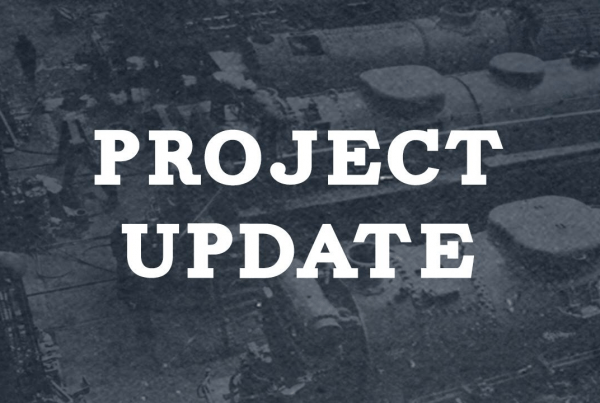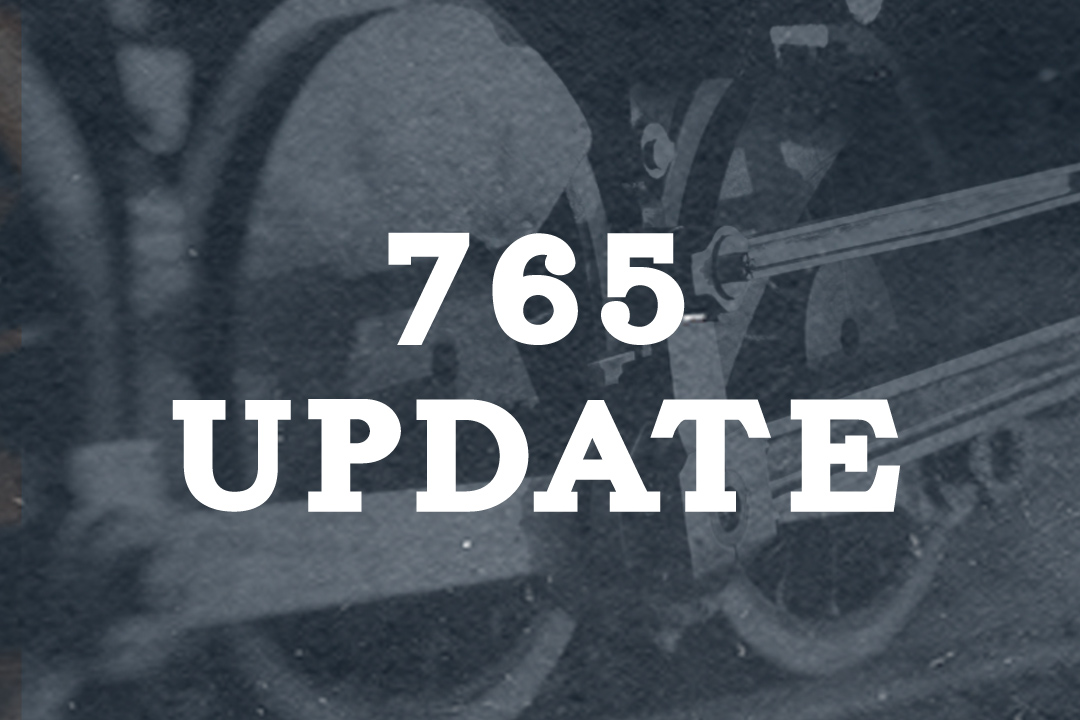Submitted by Steve Winicker.
LAST WEEKENDS SHOP ACTIVITY
The week went well with Broady stepping up and cleaning out the smoke box. There appeared to be a small crack in the exhaust pedestal that needs further evaluation to determine if it is significant and needs repair. Some work on cleaning up the throttle header was started. The interior of one of the water glasses was painted.
Other work included the installation of a governor on the 358, more wood and sub roof being added to the box car. Door and floor removal continues on the open-air car. Disassembly and painting of the metal parts on the Pennsylvania Railroad baggage cart was done. Jerrad did some work on the crane, foul weather precluded working on the crane last weekend.
UPCOMING ACTIVITIES
We will continue cleaning out cinders and dirt from under the throttle cover. The water glass that was painted will be reassembled and put back in the cab of the locomotive. All the connecting passages will be inspected and cleared of any deposits.
Other projects include: The box car needs the joints between plywood sheets and staple dimples filled. Floor removal on the open-air car needs to continue.
SAFETY SENSE
Foot protection means guarding your toes, ankles and feet from injury. Believe it or not, your feet have 26 bones for support and 38 joints for movement in each foot. Feet also have blood vessels, ligaments, muscles and nerves, which is why it hurts when you stub your toe or drop something on your foot.Protective footwear worn in the workplace is designed to protect the foot from physical hazards such as falling objects, stepping on sharp objects, heat and cold, oily, wet and slippery surfaces, or exposure to corrosive chemicals.
There are two major categories of work-related foot injuries. The first category includes foot injuries from punctures, crushing, sprains, and lacerations. They account for 10 percent of all reported disabling injuries. The second group of injuries includes those resulting from slips, trips, and falls. They account for 15 percent of all reported disabling injuries. Slips and falls do not always result in a foot injury but lack of attention to foot safety plays an important role in their occurrence.
What should workers know when buying footwear for work? Good footwear should have the following qualities…..
o The inner side of the shoe must be straight from the heel to the end of the big toe.
o The shoe must grip the heel firmly and the front surface of the heel must be at 90 degrees to the sole.
o The forepart must allow freedom of movement for the toes.
o The shoe must have a fastening across the instep to prevent the foot from slipping when walking.
o The shoe must have a low, wide-based heel; flat shoes are recommended.
People buying footwear for work should take the following advice….
o Do not expect that footwear that is too tight will stretch with wear.
o Have both feet measured when buying shoes. Feet normally differ in size.
o Buy shoes to fit the bigger foot.
o Buy shoes late in the afternoon when feet are likely to be swollen to their maximum size.
o Consider purchasing shock-absorbing insoles when a job requires walking or standing on hard floors.
Ill fitting work shoes have the capability to make a hours long work session leaving you feeling miserable.


